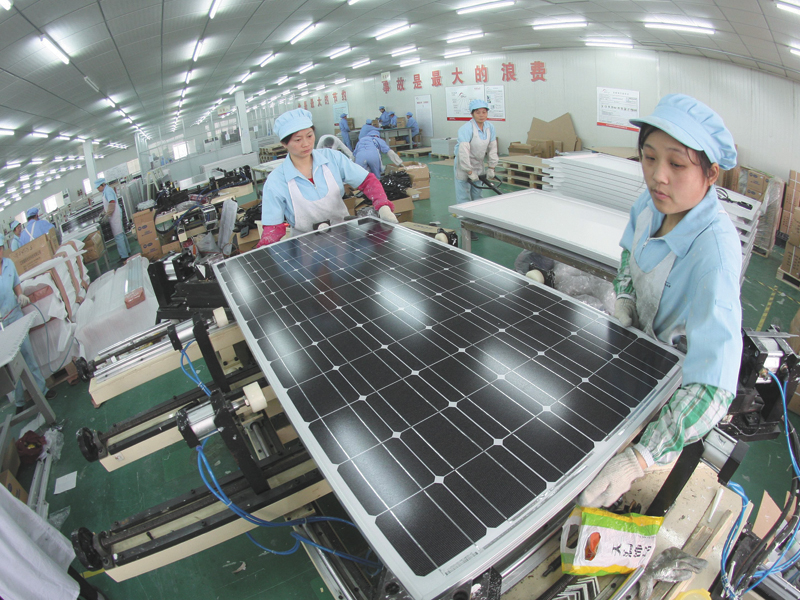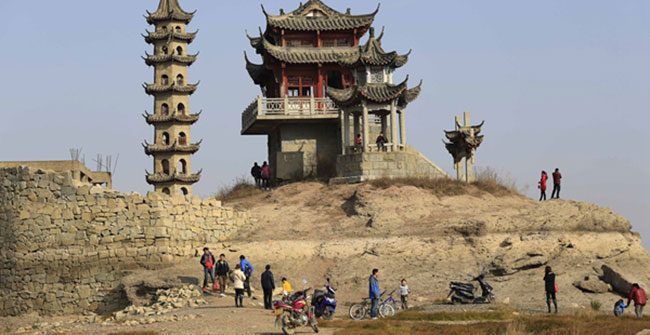Clean power hits record high
By An Baijie and Yang Xinming (China Daily) Updated: 2015-03-30 10:02Electricity generated by renewable energy including wind and solar reached more than 10.1 billion kilowatt-hours in Rudong county, in East China’s Jiangsu province.
It is the first time that a county in Jiangsu has generated more than 10 billion kWh of electricity with clean energy, according to the Rudong County Energy Bureau.
By using renewable energy, the county in Nantong city has saved 3.55 million tons of coal and reduced carbon dioxide emissions by 12.176 million tons, sulfur dioxide by 71 million tons and nitrogen oxide by 65.95 tons, according to the bureau.

Among the clean-energy electricity, about 8.93 billion kWh was generated by wind. The rest was generated using other kinds of new energy, including solar and burning of agricultural waste, said the bureau.
The county government has established 574 windmills along the coast, which generate power around the clock. The clean-energy electricity is supplied to developed regions in East China where the need for power is great.
The area started generating electricity with wind in 2004, when the county government took the first step to boost its renewable energy power generation.
To attract investment, the local government provided “babysitter-like” services to help State-owned enterprises and private companies every step of the way, according to the county’s energy bureau.
Rudong county has 706,700 hectares of coastline and the vast area is an ideal place to develop the wind power industry.
By the end of last year, seven companies had poured 13 billion yuan ($2.10 billion) into building 11 wind power bases in Rudong county.
Ten more wind power projects with a combined capacity of 1.5 million kWh are expected to be approved by the government soon.
In 2013, Nantong Qiangsheng Solar Power Tech Ltd invested 200 million yuan to install solar panels on the roofs of local companies. The solar panels not only meet the demand of the companies, but also supply the electricity grid with a capacity of 7.4 million kWh.
Miao Jianguo, deputy director of Rudong county bureau of city management, said that by burning garbage, local companies generated more than 300 million kWh of electricity and cleaned the environment at the same time.
China’s central government has encouraged investment in clean energy projects in an effort to fight pollution in recent years.

On Dec 4, the National Development and Reform Commission, China’s top economic planner, said China would lower the market threshold and absorb more private capital for the State grid and clean energy projects.
Han Shui, director of the electricity department at the National Energy Administration, told Xinhua News Agency that 12 power transmission channels were planned and were expected to cut down the use of coal by 100 million tons per year in China’s eastern areas.
Three of the 12 channels are under construction with investment of 68.3 billion yuan, and they are expected to provide 90 billion kWh of electricity every year and decrease coal use by 27 million tons in eastern area of China, including Beijing, Tianjin, Shandong, Hebei and the Yangtze River Delta, Han added.
Solar and nuclear power are among the most important of China’s energy sectors and are in need of a push from private capital.
Zhu Ming, deputy director of the NEA’s new and renewable energy department, said that the central government was promoting pilot zones for distributed solar power generation.
A total of 18 approved pilot zones are expected to provide 1.82 million kWh by the end of 2015 and attract non-government capital of 16 billion yuan, Zhu said.
Contact the writers at anbaijie@chinadaily.com.cn
- Nation in bid to ward off the Zika virus
- Li drops in for a chat at historic mosque
- Prison time reduced after 11 show they regret crimes
- PLA vows support, contributions to military reform
- Hainan looks to boost visitor numbers
- Excessive emissions a big problem in 59 cities
- Tough rules will cut marine pollution
- PLA revamps command system
- Teen calls for educational reform at political meeting
- Huge investment fraud ring smashed






